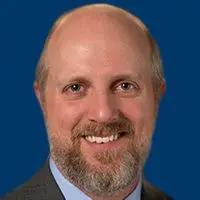Proposed Trial Would Be First Ever for Novel Two-Pronged Immunotherapy Strategy
Roswell Park Cancer Institute is taking the final steps toward what we believe would be the first-ever clinical trial combining two novel and highly promising techniques: adoptive cellular therapy utilizing re-engineered mature T cells and re-engineered adult hematopoietic stem cells.
Kunle Odunsi, MD, PhD, FRCOG, FACOG
Cancer Center Deputy Director
Chair, Department of Gynecologic Oncology
The M. Steven Piver Professor of Gynecologic Oncology
Executive Director, Center for Immunotherapy
Roswell Park Cancer Institute
We are on the threshold of a new era in the field of immunotherapy. Clinical trials have shown that we can achieve long-lasting control of many types of tumors using different methods to manipulate the immune system. The challenge now is to improve the efficacy and durability of the response. Roswell Park Cancer Institute (RPCI) is taking the final steps toward what we believe would be the first-ever clinical trial combining two novel and highly promising techniques: adoptive cellular therapy (ACT) utilizing re-engineered mature T cells and re-engineered adult hematopoietic stem cells (HSCs).
We believe this two-pronged strategy can equip the patient’s mature T cells to destroy the tumor, and continuously generate T cells to provide lifelong protection against relapse. The concept builds on studies of ACT using mature T cells pioneered by investigators at the Surgery Branch of the National Cancer Institute. Strategy, Part One: Adoptive T-Cell Therapy ACT using re-engineered mature T cells begins when the patient undergoes leukapheresis to extract the killer CD8-positive T cells.
Those cells are transduced with a viral construct so that they are enforced to express either T-cell receptors (TCRs) or chimeric antigen receptors (CARs) to recognize and destroy the tumor targets. These re-engineered T cells are expanded to become billions of cells, which are then reinfused into the patient.
Previous studies have demonstrated that this approach can trigger the regression of even large metastatic tumors. However, as with any type of cancer therapy, the outcomes are often inconsistent. What accounts for that variance? Several investigators have identified a role for the lifespan of the T cells that are given back to the patient. Short-lived T cells produce modest results, while durable T cells lead to better outcomes. Studies suggest that the projected lifespan of the T cells can be inferred from their state of differentiation at the time they are returned to the patient. Younger cells tend to persist longer, because they are less differentiated than older cells.
Overcoming the Problem of Differentiation
Differentiation occurs in response to a stimulus—for example, the changes that occur when the T cell enters the tumor microenvironment and engages cancer cells. Thus, T cells harvested from the tumor microenvironment tend to be fully differentiated—and as a result, when used for ACT, are likely to be less durable and less capable of proliferation. In the same way, even when the antitumor T cells are derived from peripheral blood, expanding them in vitro usually results in differentiated effector cells that are likely to be short lived. When used in ACT, they may circulate in large numbers, but inevitably they die quickly.A significant observation made a few years ago may help overcome this limitation. Researchers identified a subset of T cells with stem cell properties—hence their name, “T stem cells.” In preclinical studies of ACT, T stem cells persist longer and provide more effective disease control. Employing T stem cells in ACT seems a logical approach, but the team of researchers from the Center for Immunotherapy at RPCI raised an even more provocative question: could we further tip the balance in the patient’s favor if we looked back even further, to the precursors of the T stem cells—the HSCs?
To evaluate this strategy, RCPI investigators armed HSCs with T-cell receptors that they have discovered from a unique set of CD4-positive T cells, also called “helper cells.” These unique CD4-positive T cells are capable of not only recognizing and attacking tumor cells, but also supporting the work of the mature CD8-positive T cells.
The Double Whammy
Preclinical models testing the potential of this approach have produced striking results. After a few months, the HSCs, armed with receptors from the CD4-positive T cells, begin to produce T cells in vivo, lodging and proliferating in the bone marrow, where they could potentially provide a continuously generated supply of antitumor T cells.There is yet one more hurdle to overcome. Something must be added to the equation to keep the tumor in check during the few months before the new T cells begin to emerge from HSCs.
So we intend to co-inject the mature CD8-positive T cells along with the primed HSCs, enabling the mature T cells to attack the tumor immediately until the primed HSCs are ready to take over. The HSCs will deliver an added blow to the tumor, because the CD4-positive T cells extend the lifespan of the CD8-positive T cells and enable them to overcome suppression mechanisms in the tumor microenvironment.
The multifaceted plan of attack of this combination immunotherapy has shown remarkable efficacy in mouse models. The Roswell Park team is completing preclinical toxicology studies preparatory to submitting investigational new drug documentation to the FDA for a phase I clinical trial for patients with ovarian cancer. Pending approval, accrual could begin in as little as 12 months. The proposed clinical trial is part of a broader RPCI initiative aimed at developing more effective therapies for advanced ovarian cancer, supported by a grant of nearly $12 million from the New York State Stem Cell Science Program (NYSTEM). That helped moved our discoveries from the laboratory to the clinic.
Through this and successive clinical trials, we hope to pave the way for immunotherapies that will eliminate the toxicity associated with traditional treatments, improve tumor control, and dramatically reduce the risk of relapse, enabling patients to live longer, healthier lives.




